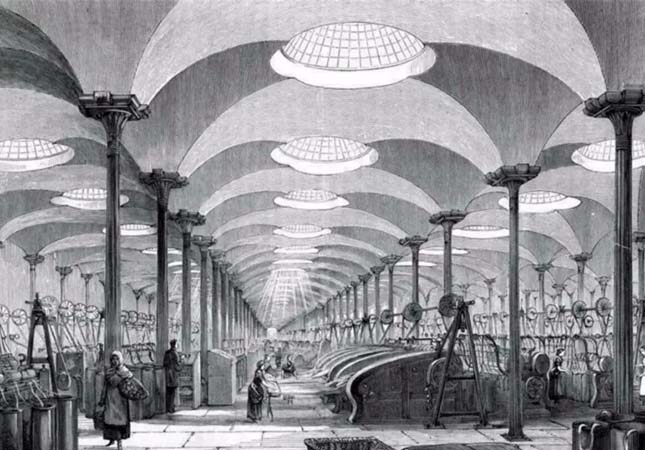Cotton textile industry includes the manufacture of textiles machines such as jacquard machine fabric strip cutting machine, has been an important media in the transformation of world from natural economy to industrial economy, giving modernity to capital and technology, labor and organization through the imports and exports of countries, making it grow from a traditional handicraft industry to a huge international industry, from a new cotton textile industry in the north of England and Scotland to an engine of global economic development, becoming one of the core leading industries toward modernization.
The global system dominated by the British cotton textile industry was an important turning point in the world’s movement to modern, which reflects the competition and integration of regions and has influence on the future world economy in an increasingly profound way.
Changes Coursed by England Cotton Textile Industrialization
1. Changes in the structure of cotton cultivation
Prior to 1800, Egypt was largely a subsistence country with the grain crops grown in the country as the main corps. However, Egypt embarked on a series of reform measures for adapting to and learning from western industrial countries. The most important one was the plan in the 1820s to reduce the production of grain corps for domestic needs and expand the production of exportable crops, such as cotton, which is a kind of product that can be long-term exported stably. In 1860, the supply of cotton in England was suddenly interrupted and resulting a rapidly rise of cotton price, which almost doubling by 1863. Such huge profits made Egypt expand cotton cultivation again inevitably and start cotton trade with Europe. The Egyptian economy began the monolithic development path since then. Cotton exports increased from 1,181,888 cantar in 1863 to 2,001,169 cantar in 1865, and the cotton production also nearly doubled within two years. Additionally, the American Civil War also increased Britain's trade in raw cotton with India and other countries, which changed the structure of cultivation in Egypt, scaled up the cotton crops cultivation wildly, then gradually made Egypt developed into a perverted monoculture economy.
To some extent, the British cotton capitalists and the industrial and commercial community's demand for the consumption of Egyptian cotton and its by-products contributed to the final British occupation of Egypt.

2. Industrialization in Europe Countries
The brilliant achievements of the British cotton textile industry exerted all kinds of pressure on other countries in Europe, forcing them to imitate and surpass. The new cotton textile technology spread to countries outside England after 1800. In spite of the France Revolution slowed down the economic development of France, the new cotton textile factories were still widely established in northern Loire River. The number of spindles in the province Rhine reached 2400 in 1809 and reached 466,000 by 1828. Belgium began to establish cotton textile factories in the early 19th century, then quickly replaced expensive water power with steam power by cheap coal resources, stepping to industrialization. During the same period, Switzerland established the cotton textile industry. Hans Casper Escher in Zurich founded the Escher-Weiss cotton mill with referring to the British model, and developed the factories into textile manufacture machinery afterwards, for supplying the expansion of domestic and continental cotton mills at that time.
Impact of England Cotton Textile Industrialization
The virtues of the British cotton textile industry made it a true model and a pioneer in industrial development in places where raw materials such as cotton and wool were not available natively.
After the Industrial Revolution, Britain not only quickly changed from a cotton importer to a dumping country, but also integrated more countries and regions into a unified world system, each country formed and constructed a global system. As an explicitly global industry, the British cotton textile industry in the 19th century for the first time stirred up the closed, fragmented world economy by making a link between regions that originally isolated and by integrating them into a new international division of labor in the world economy, causing the transformation of the overall structure of the world.




